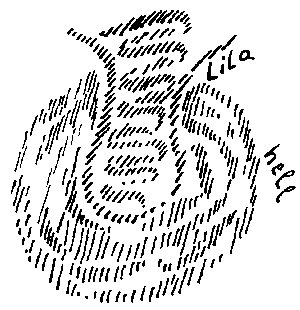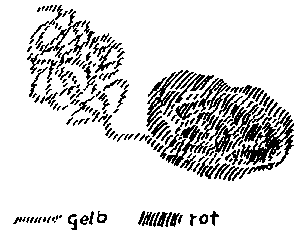Embryo


The embryo (Greek: ἔμβρυον émbryon "newborn lamb", "unborn foetus" from ἐν en "in" and βρύειν brýein "to sprout", "to swell"[1]), in plants also called germ or seedling, is generally a living being in the early stage of its ontogenetic development. The human embryo matures in the amniotic fluid within its four embryonic envelopes formed from its own tissue. The development of the embryo, embryonic development or embryogenesis, is described by embryology.
- In higher plants, the seedling (embryo) consists of radicle (radicula), shoot bud (plumula) and cotyledon or cotyledons. During germination, it develops into the seedling.
- In animals, the newly developing organism from a fertilised egg cell (zygote) is called an embryo as long as it is still in the mother animal or in an eggshell.
- In humans, after the formation of the internal organs from the 9th week of pregnancy until birth, the embryo is called a foetus or fetus (from Latin: fetus "the brood, offspring") and its further development is called fetogenesis.
Fertilisation and chaos

„... I have already pointed out before, and again yesterday, that in present-day science it is often expected that it will one day be found that cells have a very complicated chemical structure, so that we would find, as it were, the most complicated chemical formula for what presents itself in the cell. But this is a completely incorrect thought.
In the cell, even in the ordinary organic cell (see drawing, light), the chemical cohesion is not stronger than in an ordinary complicated chemical compound, but on the contrary, the chemical elective affinities become chaotic, and they are most chaotic in the fertilised germ cell. The fertilised germ cell is directly chaos in relation to the material, chaos that decays, chaos that really decays. Into this decaying chaos pours what I have described to you as the human being who has just formed in the way I have described (purple). And it is not through the germ itself, but through the processes that take place in the maternal body between the embryo and the environment, that the actual physical is formed. So that which comes down from the spiritual world is actually put into the void and only impregnated with mineral substance.“ (Lit.:GA 207, p. 127f)
Creation out of light
Using the butterfly as an example, we can see that all animal beings, as well as man, are created out of light.
„You see, the butterfly is created out of the light; but the light, by absorbing the earth matter into itself and making a cocoon, had first to be made into a thread in the pupa. Everything that comes into being in animal entities is created out of the light. Man, too, is created out of the light through the processes that take place through the fertilisation of the female egg-germ; which protects the light within the human being through a shell. And in truth it is the light which creates the human being in the body of the mother, which therefore creates the possibility that the human being can come into being out of the light. So you see in the butterfly that it comes into being out of the light that has first been caught.“ (Lit.:GA 351, p. 20f)
The integration of the higher members of man
Etheric body

„Let us look at the cerebral fluid. It has certain movements within itself. They are an image of the etheric body. But man acquires the etheric body by descending from the spiritual worlds into this physical world; he does not yet have it within the spiritual worlds. But when man takes hold of his physical body, he already has his etheric body. In a sense, he draws the ether from the cosmos. And only when he has drawn the ether from the cosmos can he unite with the physical, which is then imparted to him through heredity. So that we already bring with us that which lives inwardly in the etheric body of man by taking hold of our physical body.
Suppose, then, that the human germ comes into being in the body of the maternal organism. We examine that which is liquid in this human germ. This is not done in ordinary physiology. In ordinary physiology, one only examines the germ in so far as it contains solid matter or at least in so far as it can be observed as solid matter. The liquid is not examined at all. But if one were to examine the liquid, one would discover how in the liquid, especially in the cerebral fluid, there is an image of what has slipped into the physical man and what was first expressed in the etheric body when the ether was brought in.
Thus we can say: When the physical body is here (see drawing), when the physical germ of man is formed - I am not drawing the solid now; what I am drawing there is to be the liquid germ of man (red) - that which is present as I and astral comes down from the spiritual world. What has already been drawn in as ether (yellow) slips in here. By simply submerging the human being in the physical body, that which the human being brings in from outside is absorbed into the liquid organism. So if you were to examine the cerebral fluid of the child in its movements, you would have to say: This is actually a photograph of what the human being was before he united with his physical body. You see, this is very important, that one can actually say: In the cerebrospinal fluid, that is, in the movements of the cerebrospinal fluid, one would find a photograph of what preceded the conception.“ (Lit.:GA 212, p. 58f)
Literature
- Erich Blechschmidt: Wie beginnt das menschliche Leben? Vom Ei zum Embryo. Stein am Rhein 1989, ISBN 3-7171-0653-8.
- Christiane Nüsslein-Volhard: Das Werden des Lebens. Wie Gene die Entwicklung steuern. Beck, München 2004, ISBN 3-406-51818-4.
- Kaspar Appenzeller: Die Genesis im Lichte der menschlichen Embryonalentwicklung, 2. Auflage, Zbinden Verlag 1989, ISBN 978-3859893825
- Frits Wilmar: Vorgeburtliche Menschwerdung: Eine Betrachtung über die menschliche frühembryonale Entwicklung, 2. Auflage, J. Ch. Mellinger Verlag 1991, ISBN 978-3880690011
- Wolfgang Schad (ed.): Die verlorene Hälfte des Menschen: Die Plazenta vor und nach der Geburt in Medizin, Ethnologie und Anthroposophie, 3rd edition, Verlag Freies Geistesleben, Stuttgart 2016, ISBN 978-3772514654
- Rudolf Steiner: Das Rätsel des Menschen. Die geistigen Hintergründe der menschlichen Geschichte, GA 170 (1992), ISBN 3-7274-1700-5 English: rsarchive.org German: pdf pdf(2) html mobi epub archive.org
- Rudolf Steiner: Anthroposophie als Kosmosophie – Erster Teil, GA 207 (1990), ISBN 3-7274-2070-7 English: rsarchive.org German: pdf pdf(2) html mobi epub archive.org
- Rudolf Steiner: Anthroposophie als Kosmosophie – Zweiter Teil, GA 208 (1992), ISBN 3-7274-2080-4 English: rsarchive.org German: pdf pdf(2) html mobi epub archive.org
- Rudolf Steiner: Menschliches Seelenleben und Geistesstreben im Zusammenhange mit Welt- und Erdentwickelung, GA 212 (1998), ISBN 3-7274-2120-7 English: rsarchive.org German: pdf pdf(2) html mobi epub archive.org
- Rudolf Steiner: Die Erkenntnis des Menschenwesens nach Leib, Seele und Geist. Über frühe Erdzustände, GA 347 (1995), ISBN 3-7274-3470-8 English: rsarchive.org German: pdf pdf(2) html mobi epub archive.org
- Rudolf Steiner: Mensch und Welt. Das Wirken des Geistes in der Natur. Über das Wesen der Bienen, GA 351 (1999), ISBN 3-7274-3510-0 English: rsarchive.org German: pdf pdf(2) html mobi epub archive.org
 |
References to the work of Rudolf Steiner follow Rudolf Steiner's Collected Works (CW or GA), Rudolf Steiner Verlag, Dornach/Switzerland, unless otherwise stated.
Email: verlag@steinerverlag.com URL: www.steinerverlag.com. Index to the Complete Works of Rudolf Steiner - Aelzina Books A complete list by Volume Number and a full list of known English translations you may also find at Rudolf Steiner's Collected Works Rudolf Steiner Archive - The largest online collection of Rudolf Steiner's books, lectures and articles in English. Rudolf Steiner Audio - Recorded and Read by Dale Brunsvold steinerbooks.org - Anthroposophic Press Inc. (USA) Rudolf Steiner Handbook - Christian Karl's proven standard work for orientation in Rudolf Steiner's Collected Works for free download as PDF. |
References
- ↑ Wilhelm Gemoll, Karl Vretska: „Griechisch-Deutsches Schul- und Handwörterbuch“, Verlag Hölder-Pichler-Tempsky, 9th edition, ISBN 3-209-00108-1
